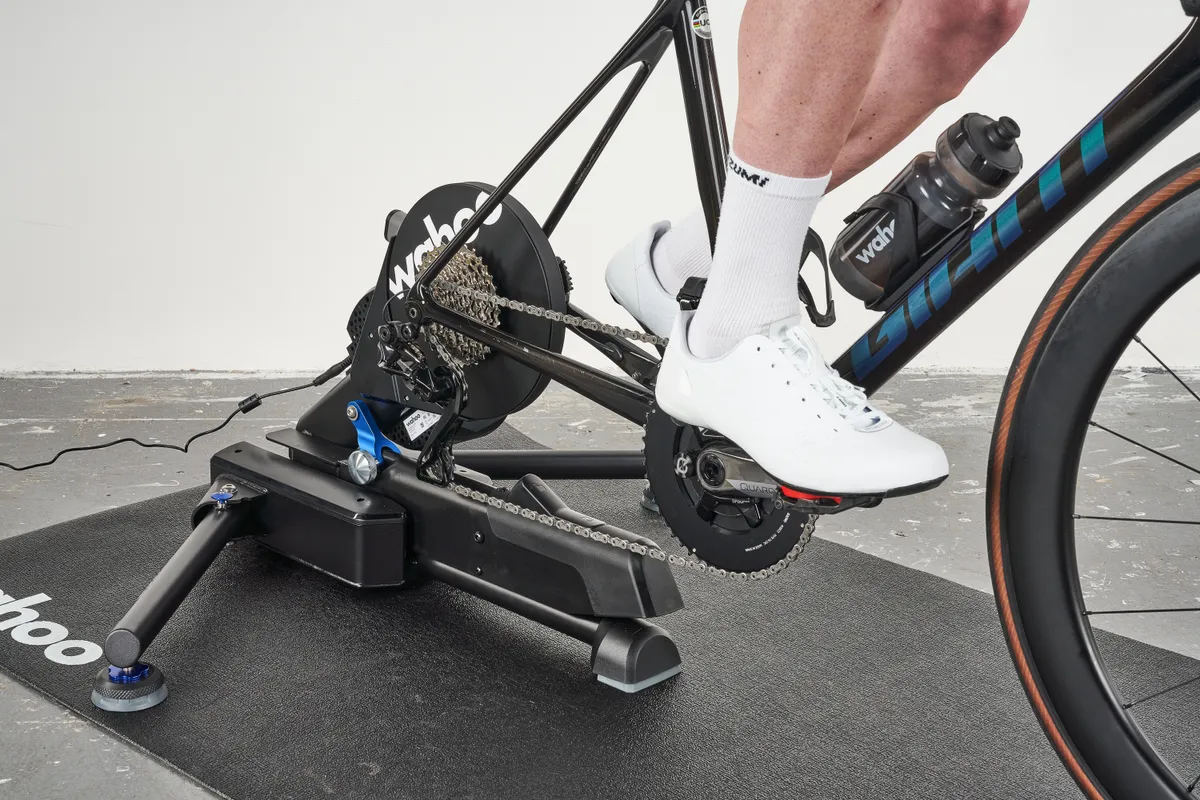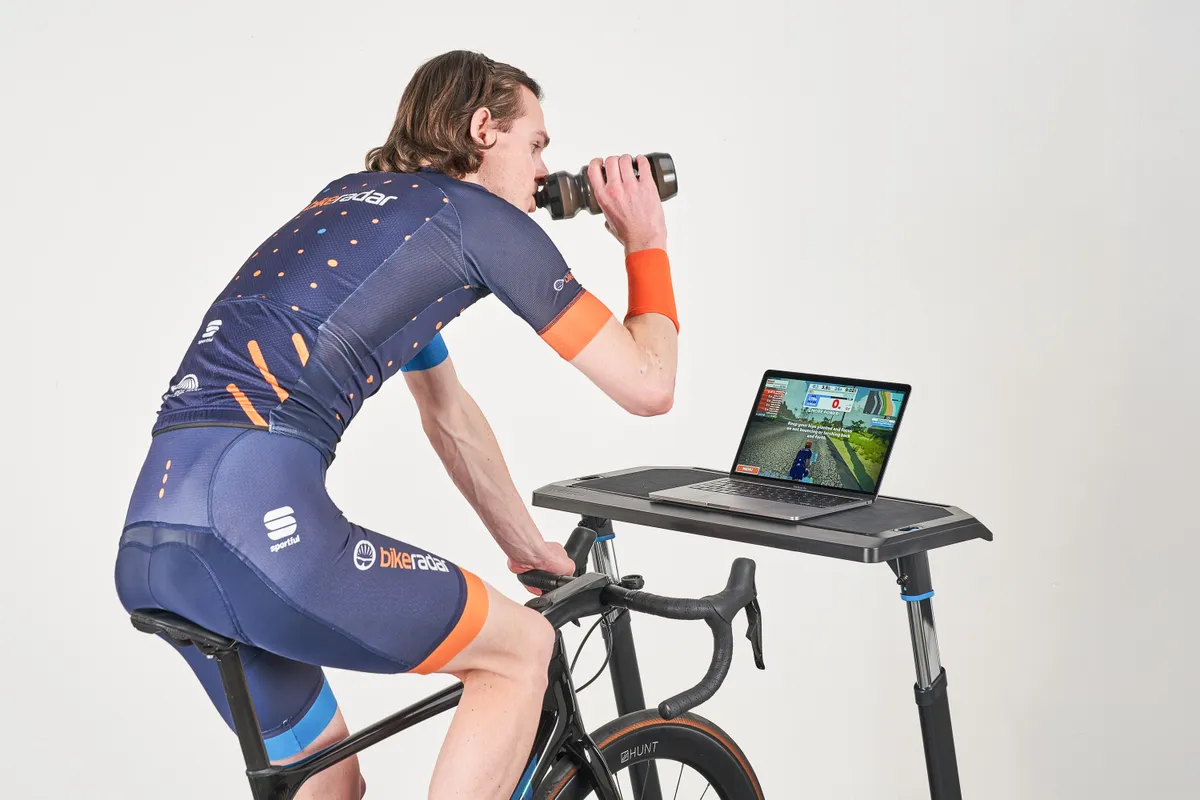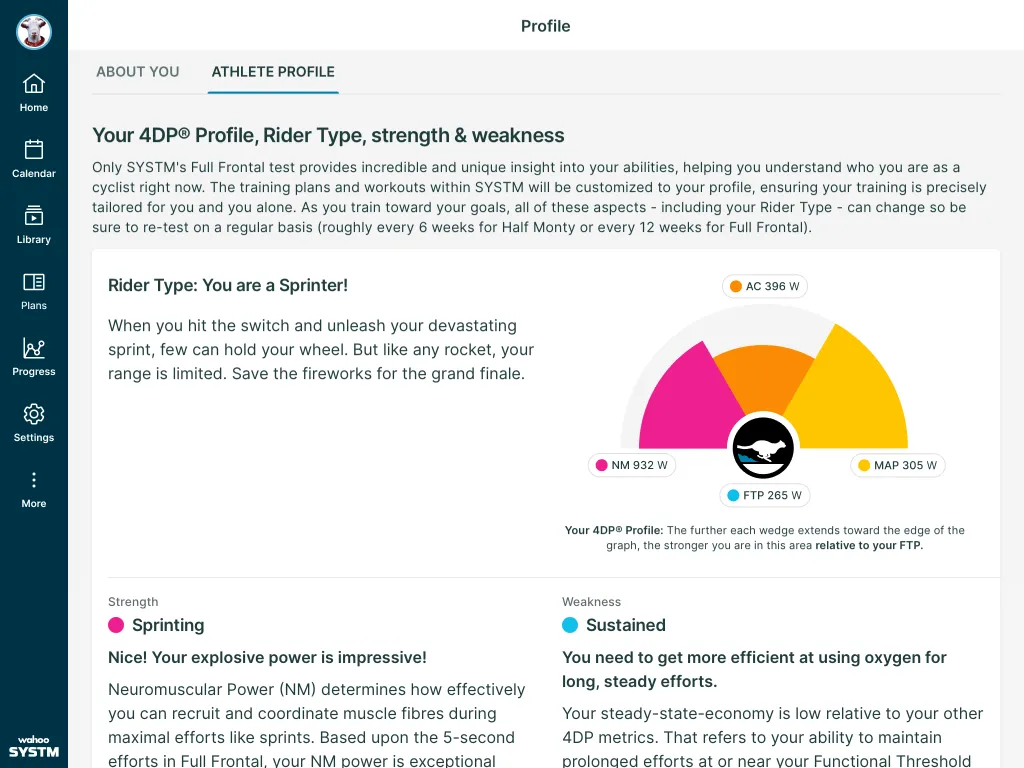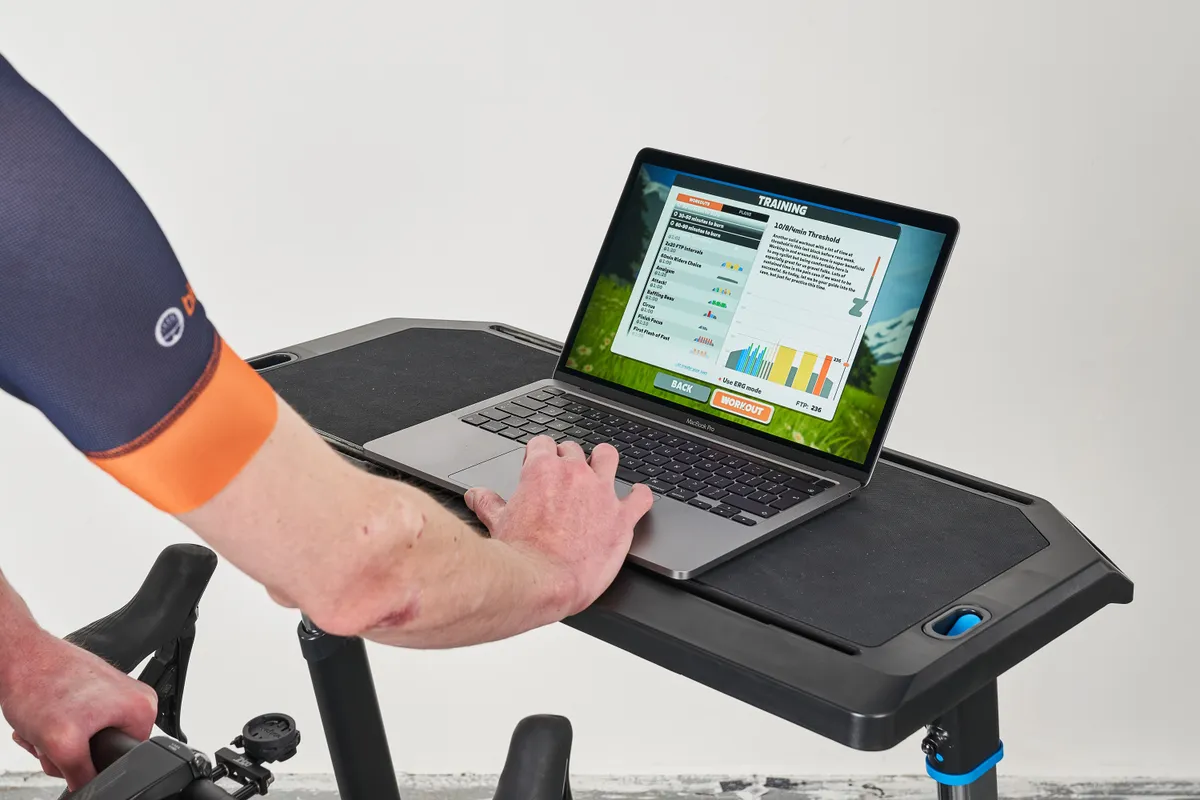It’s a cliché, but indoor cycling’s reputation for being mind-numbingly boring was previously well-earned.
Those of us who had a turbo trainer or rollers before the advent of smart trainers, smart bikes and indoor cycling apps will no doubt have painful memories of indoor training sessions that somehow appeared to slow the passage of time itself.
These tools have revolutionised how many of us approach riding indoors, though. Boredom is now mostly a thing of the past, provided you approach it in the right way, and more riders than ever are enjoying the benefits of indoor training.
With that in mind, here are five tips to get the most out of your indoor cycling.
1. Get a smart trainer

Smart trainers are a primary reason indoor training doesn't have to be boring anymore.
Thanks to the ability to control the resistance (this is known as ERG mode, which we'll come on to) and simulate courses, a smart trainer enables your indoor training sessions to be far more immersive – and beneficial, in terms of your physiological response – than would otherwise be possible.
Want to be a better climber but don’t live near any mountains? The best smart trainers can simulate gradients and replicate much of the feeling of climbing long, steep climbs. This can be especially helpful if you’re training for an event such as a gran fondo or sportive.
Although nothing can match the experience of being outside in the mountains for real, a smart trainer paired with a virtual cycling app such as Zwift comes admirably close.

While most apps require some sort of subscription, there are free alternatives to Zwift, too.
A smart trainer doesn’t have to be hugely expensive either.
The growing popularity of indoor training has come hand-in-hand with an increasing number of smart trainer options.
Of course, you can spend loads if you want to, with top-end options such as the Tacx Neo 2T and Wahoo Kickr Move offering all the bells and whistles, but more budget-focused alternatives including the Elite Suito, Wahoo Kickr Core and Zwift Hub still offer excellent direct-drive performance, with all of the features most riders will ever need.
2. Be prepared before you start your session

One of the benefits of indoor cycling is how incredibly time-efficient it can be.
With no interruptions from traffic, road junctions and the like, it’s far easier to maximise the potential of every minute spent on the bike when training indoors.
Doing so means being properly prepared before you get on the bike, though. Having all of your essential accessories ready and within reach will help you avoid any unnecessary interruptions to your flow.
For example, if you’re doing structured interval training sessions on TrainerRoad or Wahoo SYSTM, or you're following a Zwift training plan, you don’t want to run out of water in the middle of a long interval at FTP (Functional Threshold Power).
Likewise, if you’ve joined a virtual group ride or Zwift race, having to stop to refill a bottle, or having to get off the bike because you’ve forgotten to turn on your fan, likely means losing the draft of the group you’re in, and the end of any hopes of a good result.
Here’s our list of essential turbo trainer accessories:
- Fan for cooling
- At least one full water bottle. Take two if you’re not sure how long your session will last
- Towel or set of sweatbands
- Fully charged wireless headphones
- Trainer mat
- Table for your phone or smart device
- Some food, or an emergency gel or energy bar
3. Have a goal

If you’ve got all the kit and taken one giant leap into the world of interactive indoor cycling, the next thing to do is formulate some kind of goal or plan for each session.
You can have plenty of fun exploring virtual roads, but following a training plan or doing events, group rides or races, is, in our experience, even better.
There’s nothing quite like a competitive edge for enabling you to access the inner depths of your suitcase of courage, or a training plan to hold you to account and give you the motivation you need to start a session.
And, just like in the real world, being sociable and joining a community can massively enrich your experience.
On Zwift, you can join one of the many races, events or group rides happening every day or set up your own Zwift MeetUp and invite whoever you'd like to take part.
If you're using a different indoor cycling app, you can employ a third-party communications app, such as Discord or Facebook Messenger, to meet digitally and ride together on your indoor cycling app of choice.
4. Take a fitness test

Training with power is now more accessible than ever, thanks to smart trainers coming equipped with in-built power meters.
This means you can target specific training adaptations by following a power-led workout based on your personal training zones.
It all started with a fitness test. Indeed, if improving your fitness is a goal for you, then setting a personal benchmark to measure yourself against is a key step.
Though there are exceptions, most indoor cycling apps use Functional Threshold Power as a means of adjusting your training zones for interval-based workouts.
Because of this, having a reasonably accurate FTP number is crucial to optimising your training.
There are two standard ways of taking an FTP test on Zwift. The classic FTP tests involve a warm-up protocol followed by a 20-minute maximal effort.
If you’re using TrainerRoad, there’s also an option of an FTP test comprising two eight-minute maximal efforts, with a short rest in between.

You also have the option of taking a ramp test, which begins at an easy level, then progressively ramps up the power until you hit your limit.
Once you've completed your test, your chosen indoor training app will do its internal calculations for you automatically and give you an FTP figure.
What other options are there? Instead of FTP, Wahoo SYSTM uses what it calls 4DP (Four Dimensional Power). 4DP tests four different aspects of your fitness, ranging from endurance all the way through to sprinting power.
As a result, Wahoo's fitness test, called the Full Frontal, is longer and more varied than typical FTP tests on many other indoor cycling apps.
Wahoo says having this extra information about your current abilities enables SYSTM to tailor workouts to your personal strengths and weaknesses with greater specificity.
SYSTM also includes its version of a ramp test, which can be used to update your fitness numbers without needing to do the Full Frontal test every time.
5. Use ERG mode strategically

ERG mode is a setting that tells a smart trainer to hold you at a set power output by automatically adjusting the resistance to match your cadence.
This is great for completing an indoor training workout. The smart trainer will set the resistance required for the specific interval you are following, based on your training zones, and you then just need to focus on pedalling.
The benefit here is you're doing exactly what's asked of you in the workout, targeting the specific physiological adaptations the session is designed for.
However, there can be a temptation to use ERG mode for all workouts, because it can take away the need to perform big gear changes between intervals, and, as we've covered, make it easier to precisely hit the target power level at your preferred cadence.
All of that is great, but ERG mode isn’t suitable for every kind of workout, so it’s best used strategically.
ERG mode is fantastic for steady intervals lasting around 30 seconds or longer. In these instances, there’s plenty of time for the trainer to ramp the resistance up and down smoothly.
For shorter intervals, though, it can introduce problems.

When doing sprints in ERG mode, undershooting the required power will cause a smart trainer to keep adding more resistance, in an attempt to tease more effort out of your legs.
If you can’t stay on top of your cadence, it’s easy to fall into what's known as the “spiral of death”.
This is where the trainer keeps increasing the resistance causing your cadence to keep slowing, which prompts the trainer to increase the resistance even further.
Eventually, you grind to an exhausted halt.
If this happens to you (as it has to me), don’t panic. Simply stop pedalling for a few seconds, and your smart trainer will automatically ease off the resistance and allow you to get back up to speed.
That aside, being able to click smoothly through the gears as you ramp up the power in a sprint is also an important skill to practise.
If you’re training on Zwift and using the Zwift companion app on your smartphone, it’s possible to turn ERG mode on and off during a workout. This can be a convenient option for workouts containing a mix of interval types.
